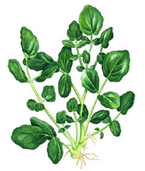
Linden
Introduction
This fact sheet provides basic information about Linden. The most common species of linden trees are T. cordata (small-leaved linden) and T. platyphyllos (large leaved-linden). They belong to the Tiliaceae family, which consists of nearly 80 species native to Europe and found in northern temperate regions. Linden trees are deciduous and fast growing. Their flowers are the most valued medicinal components of this tree.Since the Middle Ages, the flowers of the linden tree have been primarily used as a diaphoretic to promote sweating. They have also been used for a variety of other medicinal purposes in phytotherapy, including as an expectorant, diuretic, antispasmodic, stomachic, and sedative. In addition, the flowers have been used traditionally for the treatment of flu, cough, migraine, nervous tension, ingestion, various types of spasms, liver and gall bladder disorders, diarrhea, and elevated arterial pressure associated with arteriosclerosis. The linden flower is listed in the German Pharmacopoeia and is approved in the German Commission E monographs. In Germany, it is included in common cold and antitussive preparations, as well as in urological and sedative drugs. In German pediatric medicine, it is included with several other species as a diaphoretic component in a tea used to treat influenza. The flavonoid, volatile oil, and mucilage components in linden may contribute to these claimed medical properties.
Infusions of the flowers make a pleasant-tasting tea. Several sources report that linden flowers were believed to be so effective in treating epilepsy that one could be cured simply by sitting beneath the tree. Sugar is obtained from the sap of the tree, and the seed oil resembles olive oil. In Greek mythology, the nympha Philyra was transformed into a linden tree after begging the gods not to leave her among mortals.
Common Names
Linden, European Linden, Basswood, Lime Tree, Lime FlowerLatin Names
Tilia cordataWhat It Is Used For
- Linden has been used to induce sweating for feverish colds and infections, reduce nasal congestion, and relieve throat irritation and cough.
- Linden has sedative effects and has been used to treat nervous palpitations and high blood pressure.
- It has also been used in lotions for itchy skin. However, there is limited clinical information.
How It Is Used
Different parts of the linden are used in connection with specific conditions and symptoms:- Flowers: colds, cough, bronchitis, infectious diseases, and headache (particularly migraine), and as a diuretic (increases urine production), antispasmodic (reduces spasm), and sedative
- Leaves: internal use-intestinal complaints; external use-ulcers in the leg
- Wood: liver and gallbladder disorders, cellulitis (inflammation of the body's connective tissue)
- To prepare linden tea add 1 to 2 tsp flowers in 8 oz of water and steep cover for 20 minutes. Tea is to be taken 3 times daily.
- As a liquid extract linden is to be take 3 times daily in doses of 3 to 4 mL.
- As a tincture linden should be taken 3 times daily in doses of 4 to 10 mL.
What the Science Says
- Linden is available in several dosage forms, but there are no recent clinical studies to support a specific dosage. No more than 2 to 4 g/day of linden from teas or other preparations for internal use should be consumed.
Side Effects and Cautions
- None well documented.
Sources
- Drugs.Com Web site. Accessed on February 7, 2009.
- From Wikipedia, the free encyclopedia. Accessed on February 7, 2009.






